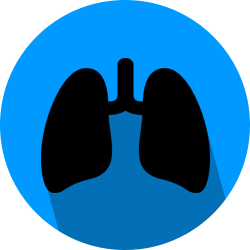Data Blog
You’re reading our Data Blogs, a great way of getting quick facts, and the latest data, on different public health topics.
Radon risk: Raising awareness to encourage action Published: ()

Radon exposure is the leading cause of lung cancer among non-smokers in Canada. Raising public awareness is a critical first step toward protecting Canadians from the health risks associated with long-term exposure to high radon levels. Health Canada’s National Radon Program (NRP) was established to educate the Canadian public, providing knowledge and resources to take action on radon. By increasing awareness, we can accelerate the reduction of radon in homes and other indoor spaces, reducing the risk of radon-induced lung cancer.
Although Canadians are more aware of radon, there is still much work to be done. According to the Statistics Canada Household and Environment Survey, radon testing rates in Canadian households have only reached between 5% and 10% depending on the region. In addition, the 2015 Residential Radon Mitigation Actions Follow-Up study found that more than 70% of households with test results above the Canadian guideline of 200 Bq/m3 had not taken action to reduce their high radon level. Encouraging households nationwide to test and – if necessary – reduce their radon exposure is a priority of the National Radon Program.

Increasing awareness among Canadians
In 2020, the NRP decided to evaluate the impact of an outreach postcard, created to inform and encourage people to purchase a radon test kit. The goal was to answer two important questions: Does a behaviourally informed postcard increase awareness, and will this awareness translate to action?
The radon action postcard was designed to present a simple, direct message about the hazard of radon gas, and clear, action-oriented steps to provide a behavioural nudge to motivate purchasing a test kit and putting it to use. They were distributed to Canadian households in areas where more than 14.49% of homes tested above the Canadian guideline of 200 Bq/m3. Health Canada was then able to measure postcard impact, by tracking the number of test kits sold during the 8-week period, collecting data from the call centre, and monitoring website traffic.
What we found
The study found that a targeted postcard does increase awareness, with a more substantial impact among communities with existing local radon awareness and engagement. Website visits to Canada.ca/radon from individuals living in targeted regions increased by over 4,000%, and TakeActiononRadon.ca saw an increase of more than 1,200%. Health Canada’s call centre also saw a significant spike in calls compared to the same period the previous year.
While there was also an uptick in the number of test kits purchased, the impact was not comparable to the increase in web traffic. This study showed that the postcards do not adequately increase the behaviour of purchasing a radon test. Moving forward, these results demonstrate the need for further solutions that focus on the importance of testing. New strategies are required to motivate action.
Click on the image to learn more about the postcard.

Next steps
Based on these findings, the NRP is proposing the addition of a coupon code, redeemable for a free radon test kit, to be included in future postcard mail outs. In combination with the postcards, ongoing awareness raising activities will help reinforce messaging and encourage action on this very important health issue.
Testing for radon is easy. Order your radon kit and start today.
